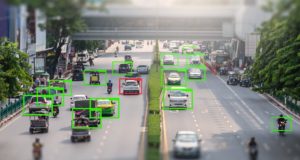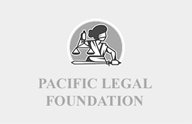Daily Journal: Facial recognition ban shows legislation can protect privacy, too

Last month, the San Francisco City Council voted to prohibit city agencies from using facial recognition software on municipal cameras. City officials raised reasonable questions about how the technology would be used, as well as the potential effects on civil liberties.
San Francisco is the first major city to ban the use of facial ID technology by a government agency, but it probably won’t be the last. (Earlier this month, the Oakland City Council followed suit by passing its own ban on facial recognition technology.) Each evolution of technology demands that society places that technology within the delicate balance between safety and privacy. It’s an issue that the U.S. Supreme Court has wrestled with many times. And it’s an issue that our local governments — and liberty advocates — should be debating as well.
The surveillance implications of facial ID technology are disturbing enough. But there are also compelling questions about how this information will be stored and used, and who will have access to it. These questions are particularly pressing since the composite of this information can reveal “a wealth of detail about … familial, political, professional, religious, and sexual associations” as Supreme Court Justice Sonia Sotomayor noted in her concurring opinion from United States v. Jones (2012), which focused on the use of a GPS tracking device.
Yet the fabric of the Fourth Amendment, which specifically applies to “persons, houses, papers and effects,” can only be stretched so far when it comes to public activity and general privacy.
For example, when a public camera snaps a picture of you crossing the street, who owns that photo? If the photo is not your “person,” “paper,” or “effect,” how can the Fourth Amendment protect it? Where, then, do your property rights secured by the Constitution trump the government’s data collection? Though it may not seem particularly worrisome for a street camera to recognize any single person’s face on one or two specific occasions, police or government agencies coordinating multiple cameras around a city that are recording, storing, and performing pattern recognition presents a starkly more Orwellian picture.
Proponents of individual liberty have long looked to the language of the Fourth Amendment to safeguard privacy. Yet strangely enough, the word “privacy” appears nowhere in the text of the amendment, which instead defends “the right of the people to be secure” against “unreasonable searches and seizures” of “persons, houses, papers, and effects.”
At the moment, facial identification software and other tracking technologies are in legal limbo. The fact is that courts are slow, and judicial precedents often lag decades behind technology.
For example, a 2014 Supreme Court decision held that the devices are protected from being searched by the police without a warrant. But that decision came almost a decade after smartphones became ubiquitous in American society. While recent Supreme Court precedent may limit some aspects of government surveillance (Carpenter v. United States (2018)), it might be years and more likely decades before a decision clarifies where digital privacy ends and government authority begins.
As technological sophistication increases and precedents lag behind it, societal expectations of privacy tend to deteriorate. This makes the “reasonable expectation of privacy” test crafted by the Supreme Court in the 1960s somewhat self-defeating and might be why certain conservative justices have signaled a return to a property-rights-based approach to the Fourth Amendment. Until the judiciary catches up and defines these constitutional protections more clearly, local, municipal and state legislatures should be asking pertinent questions about how governments are using these tools. After all, the courts are not the only recourse for defending important rights.
As technology advances in leaps and bounds, we should push state and local legislators to fill in the gaps of laws designed to protect our privacy and enforce our Fourth Amendment rights. Just as courts have a duty to define our constitutional rights, so too do local governments have an obligation to protect those rights.
This op-ed was originally published by DailyJournal on July 29, 2019.






